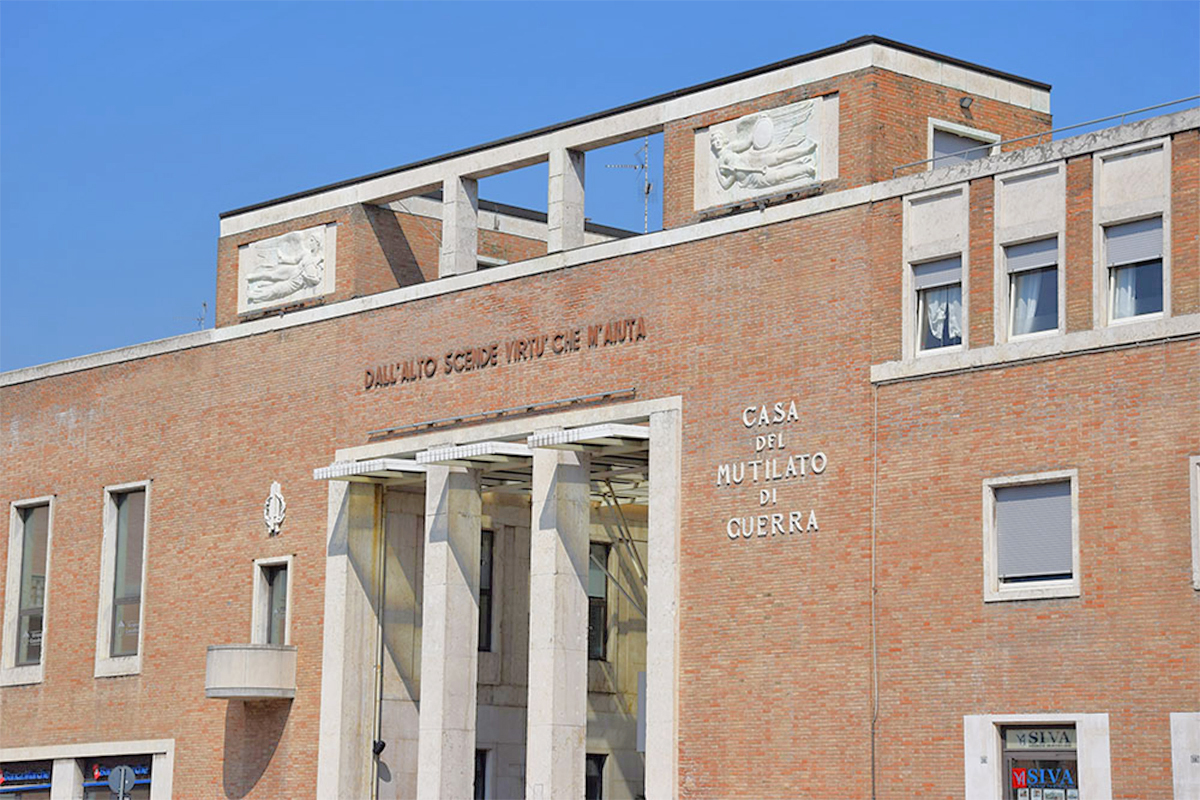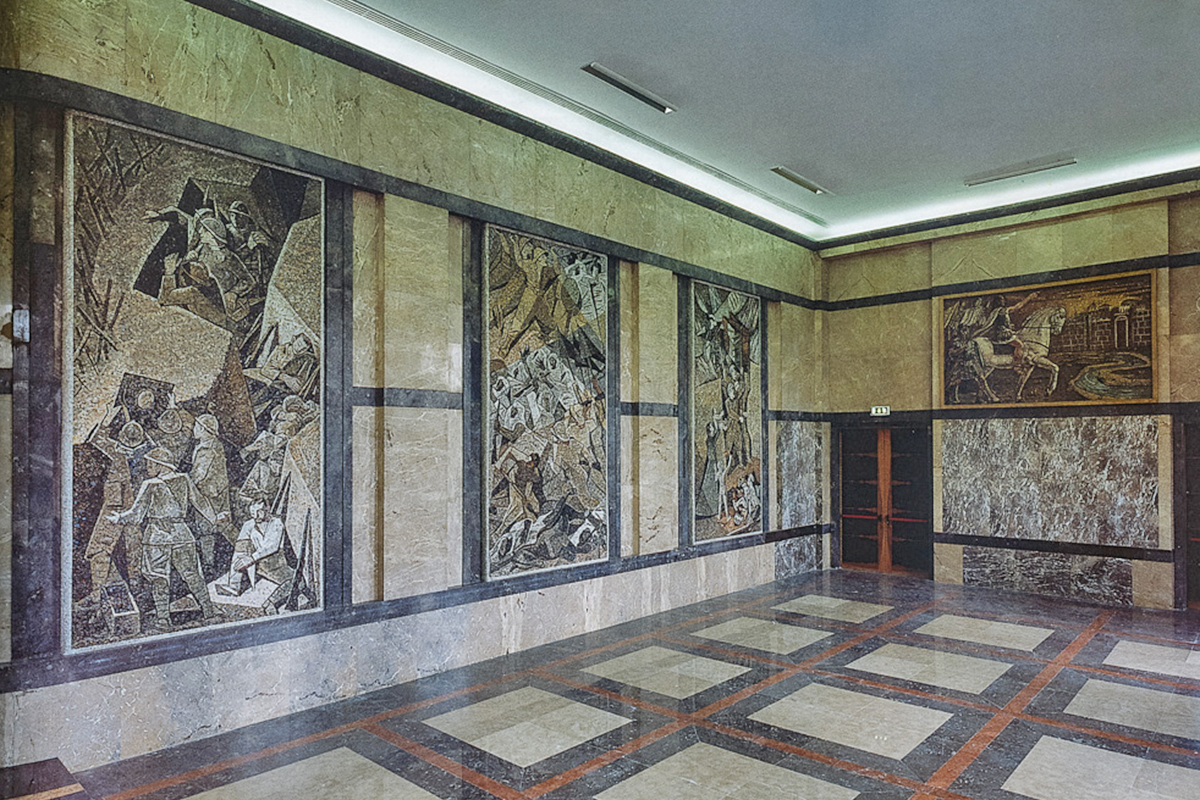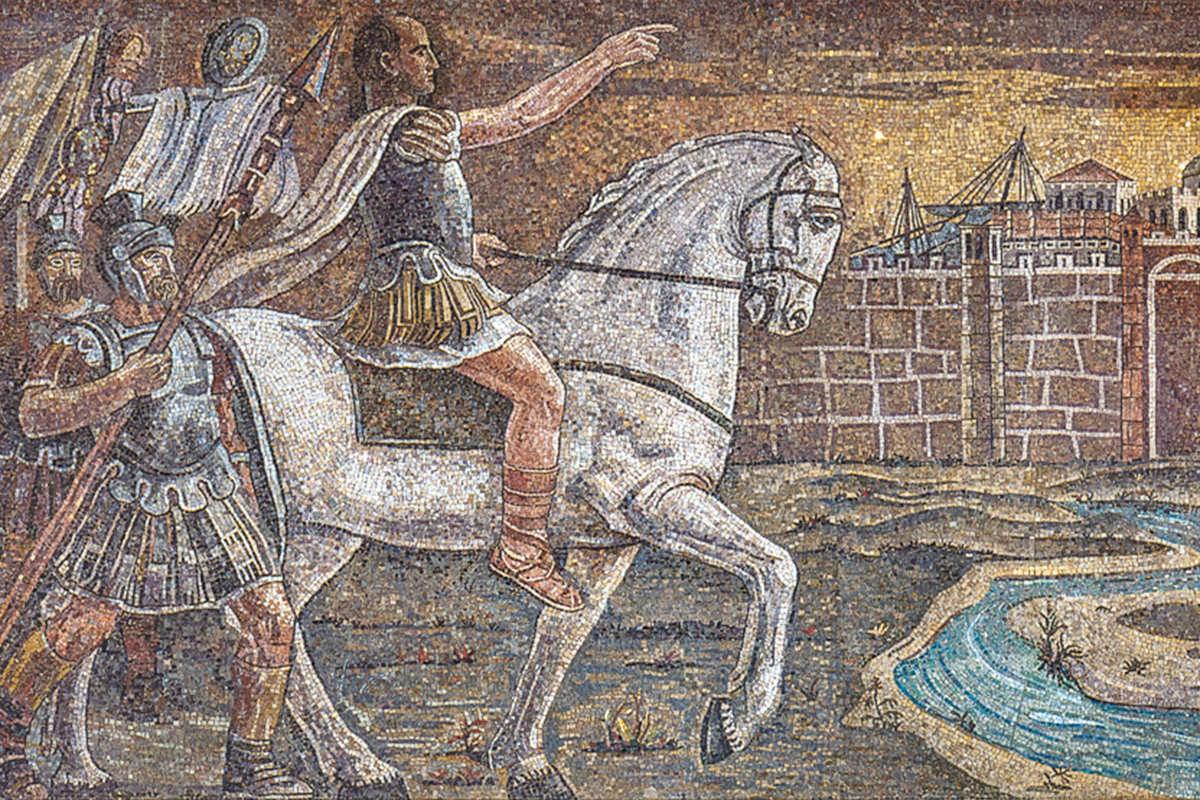During the 1920s, Ravenna began to deeply renovate the city centre with the support of the fascist government.
On the occasion of the 6th centenary of Dante Alighieri’s death (1921), the whole Zone of Silence dedicated to the Supreme Poet was renovated and the nearby Piazza del Littorio (today Piazza Caduti per la Libertà) underwent a series of restoration works.
In 1935, the local government approved a project for the construction of the new “piazza del mercato”, the current and recently restored Piazza Kennedy.
The historical centre had to be completely renovated – the old Jewish quarter, the Rasponi gardens (in front of Palazzo Rasponi dalle Teste were destroyed, as well as the remains of the ancient Church of Sant’Agnese, a trace of which is still visible on the pavement of the piazza.
The project also included the costruction of the CASA DEL MUTILATO (lit. house of the wounded), commissioned by the Association for the war wounded and invalids, designed at the end of the ’30s by architect Matteo Focaccia and only completed around the half of the ’40s.
Architecture and mosaics
The brick-built building is elongated, asymmetric, imposing and geometrically shaped. On the facade, around the large pillared entrance hall, it is possible to see sculptures and bas-reliefs. Above the entrance is a quote by Dante Alighieri “Dall’alto scende virtù che m’aiuta” (“A power descending from above that helps me”).
The attic was decorated by sculptor Umberto Pinzauti with two bas-reliefs depicting a winged victory with the symbols of the glory and the martyrdom and the Glory with a trumpet and a shield, on which the victories of the Piave river and Vittorio Veneto are engraved.
On the facade, it is possible to clearly see an arengo, a small balcony from which the people was addressed. Above the balcony, the symbol of the Association for the war wounded and invalids – three bayonets tied by a crown of thorns.
Today, this building hosts offices, apartments and various commercial spaces. On the first floor, in one of the spaces hosting a restaurant, is the Salone dei Mosaici (Mosaic hall), which still keeps some of Italy’s most significant 20th-century mosaic decorations.









